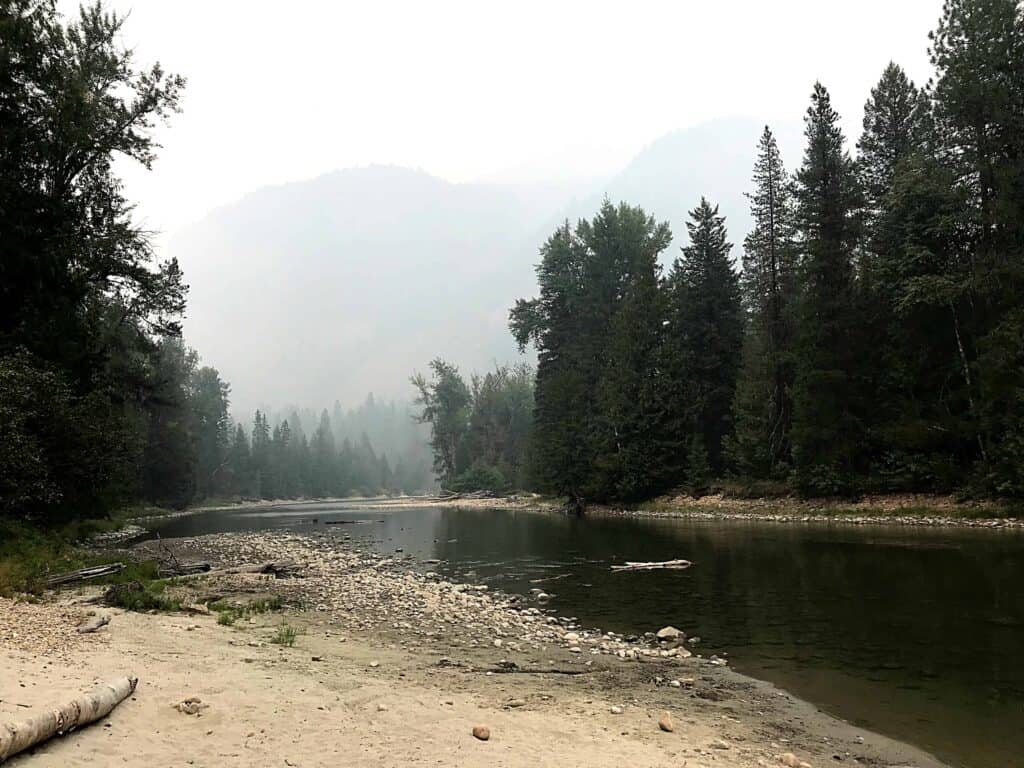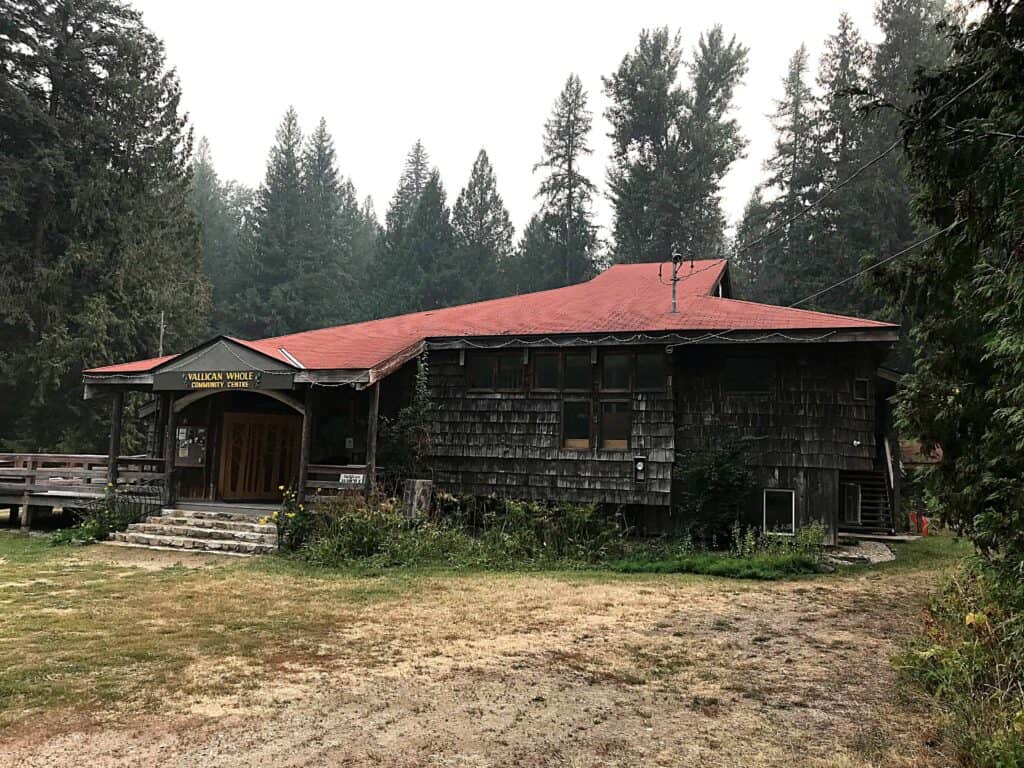Cycling “through the past” and into the future


After spending the summer in the B.C. Kootenays and before returning to the Yukon, my boyfriend and I decided to wrap up the summer with a long cycle trip. We are going bike touring in Utah this month.
Since I am riding a bicycle that was found on the side of the road with a “FREE” cardboard sign on it and because a negligible amount of our bike gears are coming from various Yukon free stores, a field-testing trip was in order before the big adventure in Utah.
We set our minds on a three-day cycling trip on the Slocan Valley Rail Trail. Aptly named, the trail used to be a busy rail line—its trains transporting ore from mineral-rich grounds around Nelson, to the smelters in Revelstoke (via the Slocan Valley). Like many decrepit rail lines from the past, local communities got together and turned it into a recreational non-motorized path. Moving along the clear-blue water of the Slocan River, with the Vallhalla mountain range as the backdrop, the whole 52 kilometres of trail is quite scenic.
We started at the trail’s north end, by Slocan Lake, and cycled to the small community of Vallican, 36 kilometres away, bike panniers and all.
Now a quiet hamlet of rural properties, Vallican came to fame as the Canadian epicentre of the 60s back-to-the-land and hippie movements. Many a young dreamer, put off by the economic, political and ecological realities of urban living, found their own piece of Shangri-La in the Slocan Valley, and especially in Vallican. Depressed by decades of mining and logging bust and boom, the whole Kootenay region attracted flocks of idealist hippies—many coming from California and beyond. Properties were cheap; and the land, bountiful. Soon enough, communes were built and old homesteads revitalized. But, decades later, most of the original back-to-the-landers had moved on, many back to mainstream society. Luckily for us, the hippies might be gone but remains of this era in Vallican are not hard to find as we discovered, cycling around.
Reminiscing of the back-to-the-land holistic ethos, community assets created at that time still bear Whole in their names: Vallican Whole Community Centre; the Whole Food Community Market; and The Whole School, in neighbouring Winlaw.
We stayed two nights at the local campground where we could try a humanure composting toilet (where your poop is transformed into compost). Wi-Fi was available in and around the campground building, but much of the Slocan Valley is without cell service as local residents vocally oppose cellular towers. After our first night, we spent the second day exploring the roads around the area. By that time, the sky was choked with smoke from distant wildfires. But despite the gloomy atmosphere, we cycled to a local swimming spot (Hippie Hole) where we cooled off in the Little Slocan River and lazed around the rocky beach.
Back to the campground for the second night, I picked up a few books from the community building and looked forward to reading at the picnic table, a welcome change from cycling. So far, our cycling gears and bikes were performing well—nothing snapped or punctured.
We left Vallican on the morning of Day 3. The plan was to cycle back to Slocan Lake where we had left the car. We decided to cycle on a paved rural road for the first 10 kilometres, instead of on the rail trail. Passing through old homesteads with iconic (and abandoned) VW vans, it was easy to imagine the once hustle and bustle of this place. We eventually reconnected with the trail at Winlaw. I was getting quite hungry, so we stopped at the Winlaw’s Gaia Tree Whole Foods Community Market. Once inside the store, there was not much to satisfy a passing cyclist, but I laid my eyes on what looked like a home-baked chocolate chip and seeds square. It was tasty, caloric and certainly “whole.” Just what I needed.
Back on the saddle, some sections of the rail trail were covered with coarse gravel, making cycling on a fully loaded bike more energy intensive, our panniers bouncing off the racks. At other times, the trail turned into a single-track grassy path—smooth and fast. As most railways are, the trail was fairly straight, making long-range visibility easy. On the few blind corners that we encountered, my boyfriend, Mark, shouted a loud and long “Hellooo!” Judging by the amount of fresh bear poop on the trail (a lot), we didn’t wish to surprise any of the resident black bears.
We made it back to the car in mid-afternoon, relieved that both our bikes and gears had passed the test and were now ready for the big September trip.




